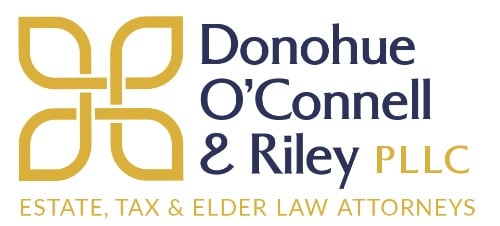News, 529 College Savings Plan, Home Equity, higher education
Strategies to Pay for Higher Education

The cost of higher education can be daunting. Whether your children plan to attend trade schools, community college, four-year bachelor’s degree programs or even graduate or professional schools, finding ways to make higher education costs fit your family’s budget can be challenging. Many parents know about the basic approaches to paying higher education – scholarships, grants, loans, work study etc. – but few find additional options. Luckily the strategic solutions here can help you fund your children’s education expenses while continuing to prioritize retirement savings.
529 College Savings Plan
A 529 College Savings Plan is a commonly used tax-advantaged financial tool that helps many parents and students save and pay for education programs. The most common tax advantage associated with 529 plans is the ability to make tax-free withdrawals from the account for any qualified education costs, including costs for primary and secondary education and books, fees, room and board at the college and graduate school level. In addition, a 529 plan can be a useful tool in estate planning, since assets in 529 accounts do not count toward your taxable estate but are still under your control. Some states also offer limited tax deductions for setting up these accounts, and contribution limits vary from state to state.
Home Equity
Using home equity is a popular way of paying for college. Refinancing your home or taking out a home equity line of credit can give you enough liquidity to cover education expenses. It is important to note, however, that this strategy can be risky. If you are counting on using your home equity to supplement retirement income, using it to pay for a child’s college could put those retirement plans in jeopardy. It is useful to remember that borrowing to finance education is much easier than borrowing to finance your retirement.
Life Insurance
One way of saving for education expenses is paying for them through withdrawals from an existing life insurance policy. Holding a whole or universal life insurance policy is an excellent, low-risk way to protect your family in the event of your death, but it can also be used as a tax-free savings account. Whole life policies accumulate a cash value over time, against which you can borrow money. The cash value stored in your life insurance policy is usually not considered in financial aid calculations, so it is possible to tap into that cash value without reducing your student’s financial aid award.
Employment at a Parent’s Business
If you happen to own a business, employing your child can be a smart way of transferring them money tax-free for their college education. The annual individual income tax exemption as of 2020 is $12,400. This means that if you employ your child starting at age 14, you can pay them nearly $50,000 tax free to go toward college before they step on campus. You can also keep them on the payroll throughout their time at college and even graduate school for additional tax savings. If you are a business owner in a relatively high tax bracket, redirecting some of your salary to your children can save you thousands in taxes and effectively make higher education costs nearly 100% tax deductible. Of course, the child should perform meaningful work for the business, and must be compensated fairly.
If these any methods apply to your situation, they could dramatically reduce the cost of higher education for your child. For more details about how these strategies could help you, we recommend scheduling an appointment with an attorney at Donohue, O’Connell & Riley, and be sure to take a look at our upcoming higher education puzzle booklet at docrlaw.com.
By Carla Vercellone and Peter O’Keefe (Legal Interns at Donohue, O'Connell & Riley)
September 3, 2020
News, covid19, lifetime giving, asset relocation, charitable contributions, roth conversions, harvesting losses
When the Skies are Grey, Look for Silver Linings

The Coronavirus has formed a dark cloud over the economy but may offer a silver lining for savvy clients. The downturn has created an opportunity for you to use proven strategies to reduce your tax burden and preserve your wealth.
Lifetime Gifting
During a downturn in the market, you can reduce or eliminate estate taxes by gifting to loved ones (or trusts) assets which are likely to appreciate in value. For example, now is an excellent time for anyone who owns a business to do succession planning. Transferring fractional shares of the business to the next generation is a timely strategy. You can transfer minority shares at a discount thereby using less of your lifetime gift exclusion than you would if you transferred the same assets at their full value. This is an easy way to reduce the size of your taxable estate while still maintaining control of key assets.
Relocate Assets
Asset location is often more important than asset allocation. Moving assets to a trust in a tax-friendly state, such as New Hampshire, might allow you to avoid state-level taxes, which can be severe. In New York, for example, estate taxes can be as high as 16%, and income taxes can be as high as 8.79% (throughout the state) or 12.7% (in NYC). The right asset location can significantly reduce your tax burdens and help you to build and secure your families’ wealth.
Charitable Contributions
You can assist your favorite charitable organizations by creating a charitable lead trust or a charitable remainder trust. If you have investments that are generating interest and dividends that you do not need, a charitable lead trust may be right for you. With a charitable lead trust, the charity receives a payment from the trust during the term of the trust, calculated as a percentage of assets. At the end of the term, the assets in the trust transfer to non-charitable beneficiaries, such as family members. The benefits are threefold – your favorite charity receives a stream of donations, you reduce your income tax, gift tax and estate tax liability, and the underlying assets are ultimately preserved for your family members.
On the other hand, if you wish to receive a steady stream of income, a charitable remainder trust may be the better option. With a charitable remainder trust, you receive a fixed payment during the term of the trust, and at the end of the term the assets transfer to a charity. This is a preferable option where you have assets that have highly appreciated, but are not generating significant dividends, such as concentrated appreciated stock holdings. If you were to sell those stocks, you would pay significant capital gains tax. Assets sold while in a charitable remainder trust, however, are not subject to capital gains taxation, and therefore you can “swap” appreciated stock for a more diversified portfolio, creating an income stream for yourself while minimizing capital gains tax. Ultimately the assets transfer to a charity, which helps to reduce your estate tax liability as well.
Harvest Losses and Rebalance Portfolio
You can take advantage of the market downturn by harvesting losses in positions that have declined in non-retirement accounts. Capital losses can offset other income, up to $3,000 a year. Capital losses can also be used to offset capital gains to an unlimited extent. They can be carried forward if not used in a given calendar year. When rebalancing and diversifying a portfolio, having these losses in store to offset future gains can be a wise move. Talk to your investment advisor about prudently implementing this strategy.
Roth Conversions
In a traditional IRA, your contributions are taxed on the way in, but not the way out. In a Roth IRA, it is the opposite. You pay taxes on your contributions, but not on what you withdraw. For many people, due to the current circumstances, it might be better to pay the taxes now and avoid them later. This move might make sense for you for a number of reasons. The first is that markets are temporarily depressed at the moment. That means that when you convert your assets from a traditional IRA to a Roth IRA, you will pay taxes on that depressed value, meaning less taxes overall. Additionally, those assets are expected to bounce back, so after you convert to a Roth IRA, you will avoid paying taxes on the value your assets gain. Another reason to convert is if your income is lower this year due to the crisis. You will have to pay income taxes when converting, but if you convert during a year when your other income is lower, your overall tax burden will be less. It may seem counterintuitive to intentionally pay more taxes this year of all years, but in the long run, converting to a Roth IRA might be the best option for you and your family if you have at least ten years to go before retirement.
We Are Here To Help You
If you and your loved ones are looking for opportunities to minimize your tax burden and preserve your wealth, consider reaching out to Donohue, O’Connell & Riley. We are here to help you get through these challenging times together.
June 25, 2020
News, covid19, CARES Act, SECURE Act
How the 'SECURE' and 'CARES' Acts Have Changed IRA Withdrawal Rules

At the end of 2019 and now in the midst of the COVID-19 pandemic, Congress passed two laws that may affect the way our clients enjoy their retirement. These laws were the Setting Every Community Up for Retirement Enhancement (‘SECURE’) Act and the Coronavirus Aid, Relief and Economic Security (‘CARES’) Act.
The SECURE Act
Congress presented the SECURE Act as a way to encourage small employers to offer retirement plans; but the law may also affect you and your loved ones’ retirement account particularly regarding required minimum distributions and inherited IRAs.
The SECURE Act has changed regulations for those born after June 30, 1949, allowing such seniors to delay taking their required minimum distributions until April 1st of the year they reach 72.
If you fall under that age group, you can allow your assets to grow for an additional year and a half without taking withdrawals. Additionally, SECURE allows you to continue to contribute to your IRA after the age of 72, even while you are required to withdraw. You can still, if necessary, withdraw at any time after age 59 ½ without a penalty, other than paying taxes on the amount withdrawn.
Additionally, another change brought by the SECURE Act is for inherited IRAs. These must now be entirely withdrawn within 10 years of the death of the initial owner, as opposed to allowing withdrawals based on the beneficiaries’ own life expectancy under the previous regulations.
This restriction only applies to those retirement plans inherited after 2019 and there are certain exceptions. This new inherited IRA rule doesn’t apply to spouses of the deceased owner who can continue to convert inherited IRAs to their own ownership. Additionally, minor children, individuals with disabilities and chronic illnesses, and those who are up to 10 years younger than the original owner can continue to stretch withdrawals based on their own life expectancies.
The SECURE could also affect your trust, especially if you have a Conduit trust. In Conduit trusts with at least one non-eligible designated beneficiary, SECURE’S 10-year limit for distributions applies. On the other hand, if the beneficiary falls under one of the exceptions mentioned earlier (spouse, minor children, etc.), the withdrawals can be based on the beneficiary’s life expectancy. We recommend you look at this website and this website for more details.
The CARES Act
Dealing with the COVID-19 pandemic, the CARES Act made it so there is no required minimum distributions for 2020, and loosened withdrawal regulations for those under the age of 59 ½ who have been effected by COVID-19.
Though these changes will only be applicable for this year, they might make life easier for those whose incomes are down during the crisis.
If you, your spouse, or a dependent has been diagnosed with COVID-19 or suffered adverse financial consequences due to the coronavirus, you can withdraw up to $100,000 before the age of 59 ½ and not be subject to the usual 10% tax. You can also report withdrawals of up to $100,000 as income over three years or treat such withdrawals as a loan to be repaid within three years with no taxes paid.
Even if you’ve already taken a distribution for 2020, you may be able to rollover the distribution to an IRA or eligible retirement plan under certain circumstances. These circumstances include, the rollover has to be within 60 days of the distribution (the IRS extended this until July 15, 2020 for distributions taken within Feb 1 and May 15, 2020), the distribution can’t be from an inherited IRA, and you can only do one 60-day rollover per 12-month period.
We Are Here To Help You
If you and your loved ones are looking for ways to supplement lost income during this very unusual year, or use these new regulations in a smart way, consider reaching out to Donohue, O’Connell & Riley to see how you might be able to take advantage of these new opportunities.
June 18, 2020
News, covid19, remotenotorization
Remote Notarization: Keeping Your Family’s Future Secure During Covid-19

States around the country have instituted emergency measures to permit the virtual notarization and witnessing of documents in response to the COVID-19 pandemic, allowing people to set up official documents like wills and trusts while maintaining social distancing.
In these uncertain times, these new regulations let folks secure their futures over video calls from the safety of their own homes. While states differ on the details of these policies, Donohue, O’Connell & Riley clients throughout the northeast will be able to take advantage of these rule changes through the duration of their home states’ state of emergency declarations.
New Hampshire
New Hampshire Governor Chris Sununu signed Executive Order 2020-04 #11 in March allowing for remote notarization via video calls or related audio/visual media for the duration of New Hampshire’s state of emergency. The notarization process can be done relatively quickly over applications such as Zoom, just keeping in mind that the signer must be properly identified and that the call must be simultaneous and recorded.
New Jersey
Similar to New Hampshire, New Jersey has also authorized remote notarization through their state of emergency. The notarizations must be made over a simultaneous video call, and the call must be kept on record for at least 10 years. For more details see Assembly 3903.
New York
New York Governor Andrew Cuomo signed Executive Order No. 202.7 allowing for remote notarization of documents to help accommodate for proper social distancing. The order sets out similar requirements to those in New Hampshire and New Jersey such as signer identification, and the video call must be simultaneous and recorded. Although the was initially set to expire on May 31, it has been extended to June 27, 2020.
Now is a time when many feel pressured to get their estate plans in order but also understandably feel wary about entering law offices, courthouses and other public places. Thanks to these new regulations, Donohue, O’Connell & Riley clients can secure their families’ futures while staying safe at home with attorneys licensed in NH, NY, NJ, ME, MA, and CT. Do not hesitate to reach out to our office at 844-50-TRUST to learn more about these remote notarization procedures prior to drafting and execution of documents.
June 4, 2020
Grim Planning: Wills, Estates, Health Care Proxies…
For over 40 years, Attorney James Riley has been serving clients in the Rockland County area with estate planning, elder law, and litigation needs. Over the years, his legal work has been based on a deep and sincere desire to help people and has developed a broad range of legal expertise including litigation, municipal and education law, small business planning and real estate. In a recent letter to the New York Times, James stresses the importance of executing wills, estates and health care proxies especially now during the Coronavirus pandemic.
To the Editor:
“Doctors Are Writing Their Wills,” by Bari Weiss (Sunday Review, March 29), raises the important point that personal wills are so essential. Among other objectives that wills accomplish, and perhaps the most important, is the naming of guardians for our young children: who will do the parenting and safeguarding of assets if parents die prematurely. The fact that physicians are now seeking to name multiple substitute guardians — more backups than usual — is most telling.
Gov. Andrew Cuomo has established an executive order that allows documents to be notarized remotely by video means. Competent estate-planning lawyers are now using this method to accomplish the proper execution of wills without the need for a meeting between lawyer and client.
Wills or codicils, which are amendments to existing wills, can now be signed in New York, and hopefully in many other states, without the need for an in-person meeting with a lawyer. This is a very good thing.
James K. Riley
Pearl River, N.Y.
The writer is a lawyer and certified financial planner.
Read the original letter here.
April 8, 2020

